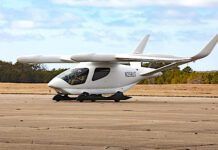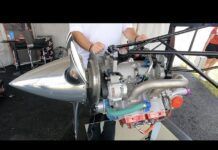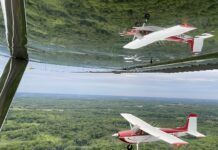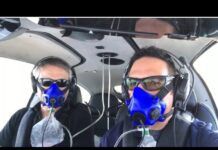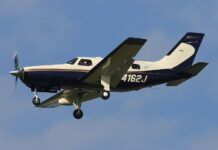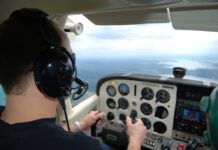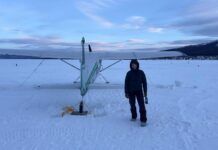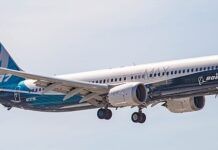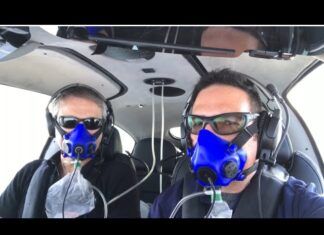AOPA started on this project about one year ago, announced its intentions publicly at AOPA Summit last October, and is now setting out on an effort to grow the nationwide collection of 650 independent flying clubs into 1,000 networked aviation cooperatives.

Like many large successful organizations that attempt to collect people — and money — to support a common cause, AOPA has found its critics regarding what it does and how it spends its money. But Adam Smith, who originally joined the cause as a consultant for the project and now serves as senior vice president of AOPA’s Center to Advance the Pilot Community, is frank about his assessment of the association’s flying clubs initiative. “If this isn’t classic association work,” says Smith, “I don’t know what is.”
“We don’t want to obscure our work with dollar signs,” Smith said to AVweb this week. “AOPA isn’t coming at this from a financial perspective.” AOPA is well aware that successfully building a national network of grass-roots flight clubs wouldn’t be bad for the organization and could present opportunity for growth. But done right — by facilitating more affordable access to more aircraft for more people — the effort could bring benefits to aviation as a whole that may be similarly undeniable. It’s that mix of motivation and benefit that could make possible the idea of nearly doubling the number of flying clubs. And nearly doubling the number of flying clubs is only the short term goal. As Smith says, “There are 5,100 public-use airports in the country. Why wouldn’t we want a flying club at each one?” There are, of course, some significant hurdles.
AOPA began this push with basic research, the findings of which they’ve made available online as a PDF. They surveyed flight clubs and asked what’s working, where they needed help, and where they saw their own weaknesses. A few themes emerged.
First, says Smith, flying clubs largely succeed in helping with the cost of aviation. They are, in effect, aviation co-ops — a group of people coming together to share the cost of ownership. The group brings down the cost of participating in aviation for the individual. Second, these groups build community. That, says Smith, plays a part in the experience and building the aviation community. As Smith puts it, “It creates stickiness.” Aviation is a commitment in time and money — time and money that could otherwise be spent on other things. Smith says the most effective clubs bring people together and create a supportive environment of like-minded individuals who make it more likely any one individual will stick to his or her commitment to aviation. The club “acts as a support group.”
The Basics
AOPA found that there are about 650 flying clubs already in place in the U.S. Smith’s vision is to first try to bring these groups together. He says AOPA’s first mission is to collect the existing clubs and begin creating a network that facilitates the exchange of information. AOPA’s network is designed to present a no-cost low barrier opt-in to flying clubs. For now, the association is largely trying to identify the network by asking clubs to sign on to a common set of values. “We’re halfway through the list, and literally no one has said ‘no’ yet,” he says.

The support network is currently composed of some simple tools. “We’ve got a Facebook group where leaders can share ideas, interact, and find help sharing and finding information. (It already hosts more than 1,700 members.) We’ve got a monthly webinar [sample here] that covers subjects like getting started and selecting an airplane. We’ve got a monthly newsletter, and we’ve assigned a manager to the flying clubs initiative.” That man’s name is Chris Lawler. Smith says the framework so far is basic, and he sees it as version 1.0. Version 2.0, he says, is where the value of the work will be applied more directly to bearing fruit through expansion. Evolution of the program will include further development of AOPA’s web-based flying club finder. If all goes to plan, it will also develop and support a turnkey template for people interested in starting a club. As Smith puts it, “If you’ve got eight people with X dollars, here you go.” Alongside with development of that product, AOPA hopes to address two of the biggest factors that face any startup flying club: financing and insurance.
AOPA is trying to build a pathway to better financing and insurance options for aspiring flying club leaders. That means they’re talking with underwriters and banks. “There are prejudices out there,” says Smith. “Institutions won’t even talk to you.” Smith says AOPA is in a position to better represent the needs and interests of hundreds of clubs and to lay those interests and needs out to banks and insurers with language that won’t scare them away. In short, AOPA hopes to bridge the gap between the needs of flying clubs and the concerns of insurance and lending institutions.
Beyond The Starter Kit
Any progress there will become a cornerstone of AOPA’s primary flying club offering — a starter kit for new clubs. The kit “will likely always be a work in progress,” according to Smith, but it will provide potential clubs with sample documentation and legal work. “It will help someone throughout the process and guide them through the financing and insurance options that are available. AOPA hopes it will be there aid clubs as they evolve. This kind of support is a priority for AOPA. “We’re working on these things now,” says Smith.
Looking ahead, AOPA hopes its involvement in networking clubs could create something Smith informally referred to as a “reciprocal membership” program. Essentially, reciprocal membership is a model whereby membership at one club would grant a member benefits at another club — perhaps access to aircraft of the same type. AVweb readers may recall a similar effort pursued by OpenAirplane‘s Rod Rakic. Rakic hopes to work with insurers and operators that rent out aircraft to devise a standardized check ride system throughout a network of operators. In Rakic’s ideal world, any pilot who passed a checkride at one operator within the network would be qualified to rent equivalent equipment offered by any other network operator. Smith said AOPA representatives plan to meet with Rakic soon and hope to work with him — or in parallel to his efforts.

Along with largest current barriers to the proliferation of flying clubs — those posed by insurers and banks — AOPA plans to address dated material offered by the FAA. With regard to flying clubs, Smith says, “The FAA has an AC [Advisory Circular] on its web site that dates back to 1965.” It’s quite a good document, says Smith, but it’s a bit out of date. “For one thing, the internet has been invented since then.” AOPA hoes to provide updated information and to work with the FAA on updating its AC.
A modern AC from the FAA would include reference to advances that have done wonders for modern flying clubs. Among those, internet scheduling is key. “As an outsider looking in, scheduling always seems like an issue,” Smith says. “But people in clubs know it’s not generally much of a problem. There are a lot of hours in a year.” According to Smith, the average club has about a dozen members per airplane, and there are rarely significant scheduling conflicts. Smith speaks on the subject, drawing in part from his own personal experience. “In my club, we had 30 [people per airplane], and I could pretty much fly it whenever I wanted.” For that outcome, effective internet scheduling is a key factor.
Flying Clubs As Community
Smith’s own experience is something not likely lost on AOPA leadership. He directly credits flying clubs for providing an affordable channel to access aviation. According to Smith, “there is no way I would have started flying for another 20 years or more if it had not been for the flying club.” He also credits his club for its social benefits. Smith’s case may not be typical in this regard. “I met a lot of friends, but one of them is now my special friend for life.” Smith met his wife in his flying club.
AOPA isn’t starting a dating service (yet), but the association believes it can play a role in building community within flying clubs. And this is one area where flying clubs expressed the largest desire for help. Smith says flying club leaders want to find good reasons to bring their members together. They want to deliver enjoyable experiences within the context of the club and develop their clubs as social entities. AOPA believes networking the clubs and connecting them to a larger association may prove to be a benefit in that respect. “We will be working hard on the social side of flying clubs,” says Smith.
End Game

AOPA is aware that whatever templates they provide must be flexible enough to accommodate the range of interests that might be represented by flying clubs. This represents a significant challenge. Standardized guidance can facilitate the formation of clubs and amplify their ability to satisfy insurance and lender requirements, but a successful and prolific network will need to make accommodations for flexibility. Smith realizes this. “Affordability is a major issue for clubs, but there are also clubs that aren’t thinking that way. There are clubs that want to fly modern planes, and what they see in the club model is an opportunity to fly their dream plane — something they couldn’t afford to do (or maybe wouldn’t even want to do) — on their own.” That’s just a tiny example. There may be specialty interests for things like access to vintage or aerobatic aircraft, as well.
AOPA is still working to define the challenge, but for now, the association’s goals are broad. Circumstance or regulation could stall or derail the effort, but the potential benefits for the association in terms of increased membership and influence — and the potential benefits for pilots seeking affordable access to flight — are prizes worth pursuing. That suggests this effort may be more likely to continue to grow than to fade away.




